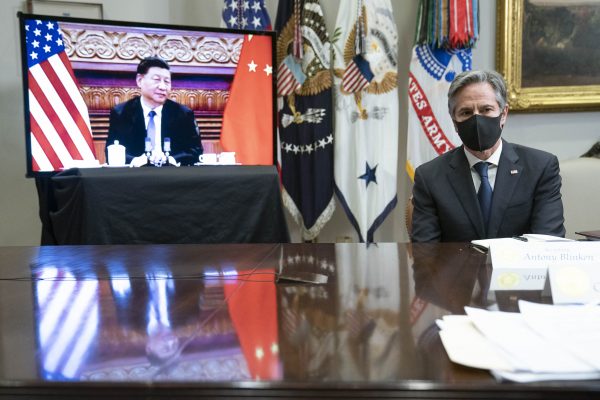As far as strategic planning on the part of regional actors is concerned, there is no doubt that strategic competition and collaboration can and must be balanced. ‘Strategic competition’ has become the hallmark of US policy toward China, and regional actors’ strategic planning has been increasingly unfolding in the context of US–China competition. But ‘competition’ needs to be clearly defined as a constructive, bounded, calibrated, and healthy process, rather than as something that is unconstrained, zero-sum, and malicious. The sum of US–China interactions in the region should not be defined only in competitive terms.
Washington often talks about collaboration and engagement with China. But in the US narrative, engagement has been marginalised and is perceived as transactional. The inherent value of engagement needs to be recognised and restored. The old engagement consensus — the four-decade-old bipartisan consensus in the United States which views China as an ‘other’ that must be ‘transformed’, ‘integrated’ and ‘ushered’ into a US-dominated order — was an epistemological fallacy. A new engagement consensus in the coming years might be possible, but it would require both Washington and Beijing to abandon the zero-sum mentality and instead conceive of power as a positive-sum game.
This would allow an order in which the United States and China could coexist while continuing to compete in a constructive and positive-sum way, rather than in a confrontational, zero-sum manner. Instead of pursuing a damaging, complete decoupling of the world’s two biggest economies, Washington and Beijing might be able to recouple their economies on a new basis of reciprocity.
Different visions of regional order need to be harmonised and a more inclusive vision needs to be developed and articulated. Too many narratives from the region have drawn distinctions along ideological lines, such as ‘democracy versus authoritarianism’. Such a narrative is misleading and tends to foster a false sense of comfort when it turns a world of complexity into a simplistic, black-and-white one.
The democracy versus authoritarianism narrative is whispering life into the self-fulfilling prophecy of a divisive, new Cold War. For instance, the vision of the so-called ‘Free and Open Indo-Pacific’ region has been pitched by the United States and its allies and partners as one of ‘like-minded’ states with ‘shared values’ of liberal democracy.
The geopolitical calculations of counterbalancing and excluding China are carefully couched and camouflaged in an ideological narrative. The vision of a ‘Free and Open Indo-Pacific’ region becomes one that is consequently divisive rather than inclusive. A healthy dose of suspicion and studied vigilance are needed toward any such narrative of the region. The future regional order has to be one of inclusion and integration, rather than one of exclusion and bloc-rivalry.
Genuine multilateralism in the region that is inclusive and does not discriminate against particular countries should be fostered. The impetus for regional economic and trade cooperation needs to be enhanced rather than weakened. The politicisation, weaponisation and over-securitisation of trade issues is corrosive to the development of healthy and prosperous regional economic dynamics.
Free trade agreements should not become geopolitical weapons. Beijing has now officially applied for membership in the Comprehensive and Progressive Trans-Pacific Partnership (CPTPP). Some critics suggest that China’s application was just ‘grandstanding’ or aimed at deflecting criticism of its backtracking on economic reforms. But Beijing’s bid to join the CPTPP is genuine and aims at daobi gaige (creating pressure for reform at home), to lock in momentum toward the implementation of domestic structural reforms.
China’s CPTPP application shows that while the world is increasingly defined by ‘strategic competition’ between two most powerful countries, Beijing believes that the recipe for success lies in not protectionism or isolationism, but rather in further opening up and linking itself more closely with the outside world. The West has stated all along that the CPTPP is not driven by geopolitical calculations and is not targeted against any specific country. Now it is time for the United States and its allies to prove that they meant what they said.
Dong Wang is Professor at School of International Studies and Executive Director of the Institute for Global Cooperation and Understanding, Peking University. This article is adapted from the opening remarks the author delivered at the Ditchley Conference on the Indo-Pacific on 22 October 2021.


China trying to join the CPTPP is like Russia trying to join the NATO.
While the author have a point in saying “Beijing’s bid to join the CPTPP is genuine and aims at creating pressure for reform at home”, geopolitically the bid is unlikely to be successful because some CPTPP members (including Australia) would oppose it. Just look at Russia and their multiple attempts to join the NATO (the idea was even put forward by Putin in 2001).
Ian Zhou’s analogy between the entry of Russia into NATO (a military arrangement) and China into CPTTP (an economic agreement) is entirely inappropriate. The latter is aimed at strengthening the legal foundations of international trade and commerce. No existing member of CPTPP has ruled out China’s entry to CPTPP as Zhou suggests. Some have stressed that it will be difficult to meet the terms of entry. It will be difficult but not impossible if CPTPP aligns with China’s economic reform ambitions.
The problem is that China has become so untrustworthy that its application to join the CPTPP will be assessed both economically as well as a national security issue.
Further, the use of “win-win” and “sum-game” to describe bilateral interactions is flawed because it does not consider other stakeholder and global values in the calculations. Including those calculations should strengthen the genuineness of the collaboration and allow for global scrutiny of the participants.